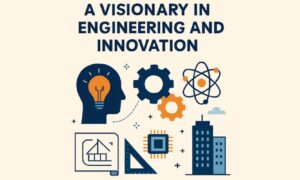What Are Must-Read Books for Software Engineers?
To help software engineers expand their knowledge and skills, we asked CEOs, founders, and other industry leaders to share their top book recommendations. From mastering distributed systems with Kleppmann to demystifying regular expressions easily with Friedl, discover the 13 must-read books these experts believe every software engineer should read.
- Designing Data-Intensive Applications by Martin Kleppmann
- Code Complete by Steve McConnell
- Rapid Development by Steve McConnell
- Peopleware by Tom DeMarco and Timothy Lister
- The Pragmatic Programmer by Andy Hunt and Dave Thomas
- The Art of Computer Programming by Donald Knuth
- Patterns of Enterprise Application Architecture by Martin Fowler
- Clean Architecture by Robert C. Martin
- Cracking the Code by Gayle Laakmann McDowell
- Effective Engineer by Edmond Lau and Bret Taylor
- Design Patterns by Erich Gamma, Richard Helm, Ralph Johnson, John Vlissides, and Grady Booch
- Clean Code by Robert C. Martin
- Mastering Regular Expressions by Jeffrey E. F. Friedl
Designing Data-Intensive Applications by Martin Kleppmann
In reality, most production systems are distributed: Kubernetes, DNS, and even web applications. Designing Data-Intensive Applications by Martin Kleppmann has been the authoritative book for a while now and will probably continue to be for years.
He takes a systems engineering perspective and explains common design patterns using concrete examples. Given the depth he goes into, it is surprisingly accessible. The book is thick, and it’ll take you a while to finish. But when you do, you’ll know the equivalent of a master’s degree in distributed systems.
Ruurtjan Pul, CEO, NsLookup
Code Complete by Steve McConnell
Code Complete by Steve McConnell is an excellent software engineering book that helps individuals build the best quality code out there. McConnell offers practical advice for a plethora of common debug problems and critical construction issues.
Synthesizing the most cutting-edge, effective techniques, the code samples truly illustrate the principles in a clear and pragmatic guide.
Alexandre Robicquet, Co-founder and CEO, Crossing Minds
Rapid Development by Steve McConnell
A book software engineers should read is Rapid Development by Steve McConnell. In this book, Steve McConnell focuses on project management styles instead of the coding styles covered in his other book, Code Complete, which is considered by developers to be the bible of the style of coding.
The book delves deeper into project management details than The Pragmatic Programmer; for example, it devotes an entire (necessary) chapter to the dangers of estimating software timelines and discusses additional issues unique to software projects, such as scope creep and team building.
Although this book was written in 1996, before Agile, McConnell still covers a wide range of approaches to lifecycle planning, from pure waterfall to iterative techniques like evolutionary prototyping that are like Agile.
Stefan Chekanov, CEO, Brosix
Peopleware by Tom DeMarco and Timothy Lister
Peopleware: Productive Projects and Teams by Tom DeMarco and Timothy Lister, is one book software engineers must pay attention to. It is a must-read for any developer who wants to learn about the human elements of software development.
The authors focus on the human side of managing software engineers, discussing motivation, team dynamics, and communication. Through real-world anecdotes and case studies, DeMarco and Lister offer insight into the challenges of team dynamics and provide practical solutions for creating an environment that fosters creativity and productivity.
They also provide a unique perspective on measuring the effectiveness of software development teams. Peopleware is an invaluable resource for any software engineer who wants to improve their effectiveness as a team member or a manager.
Saneem Ahearn, VP of Marketing, Colorescience
The Pragmatic Programmer by Andy Hunt and Dave Thomas
Software engineers read a lot of books in the early years of their occupation. Few books stick with you. This is primarily because technology changes and some of the language and framework reading ages quickly.
The Pragmatic Programmer is the big exception for me. I was urged to read the book when I was knee-deep in Java programming and pattern mania. The Pragmatic Programmer provides a robust and timeless framework for thinking about software problems in a language and framework-agnostic way.
Trevor Ewen, COO, QBench
The Art of Computer Programming by Donald Knuth
This is a hard book to chew and not an introductory book. It does not help that it uses MIX assembly language code examples. No one uses MIX now. Still, it is packed with insight, rigor, and interesting mathematical puzzles. Knuth’s dry humor is peppered throughout the book. I recommend engineers at least skim through these volumes.
Deepti Chopra, Co-founder, Adaface
Patterns of Enterprise Application Architecture by Martin Fowler
Patterns of Enterprise Application Architecture by Martin Fowler is a must-read for software engineers working on large-scale applications. The book presents a collection of patterns and best practices for designing and implementing enterprise software systems.
By understanding these patterns, engineers can make informed decisions about system architecture and tackle common challenges in enterprise application development. Reading this book equips software engineers with valuable knowledge to create scalable, maintainable, and high-performance software systems.
Burak Özdemir, Founder, Online Alarm Kur
Clean Architecture by Robert C. Martin
Nowadays, applications are extremely complicated, with multiple components. Clean Architecture: A Craftsman’s Guide to Software Structure and Design by Robert C. Martin provides information about SOLID concepts and how to implement them. It also discusses object-oriented and functional programming techniques. What I loved about this book was how it provided real-life use examples with lots of pictures to aid comprehension.
It won’t hurt to read this book, but I believe it is more appropriate for experienced and senior developers because of its emphasis on architecture. Everybody who is serious about their profession should read this.
Andrew Dale, Technical Director, CloudTech24
Cracking the Code by Gayle Laakmann McDowell
If you’re a software engineer, do yourself a favor and read this book. Cracking the Code Interview: 189 Programming Questions & Solutions is exactly what it sounds like—an amazingly thorough primer for anyone who searches for a job and needs to do a coding interview.
Given the volatility in the market at the moment, there has never been a better time to pick up a copy and get prepped. The author was at one time both a candidate and an interviewer, so she has a really excellent outlook into the hidden details of the questions, how to make sense of what you’re being asked, and how to upskill on the core concepts that go into a typical coding interview.
Dragos Badea, CEO, Yarooms
Effective Engineer by Edmond Lau and Bret Taylor
The Effective Engineer: How to Leverage Your Efforts In Software Engineering to Make a Disproportionate and Meaningful Impact is an excellent read on software engineering that will leave the reader feeling informed, more knowledgeable, and even leave you with some new ideas. This book is for those software engineers who want to be the very best and produce a larger impact than others.
The book is about a mindset you can harness in this type of position, but it’s also about the fundamentals. The important things all successful software engineers must do in order to be the very best version of themselves.
This will help you be a better software engineer, run better teams of software engineers, and even train them. It’s your go-to book for modernizing this evolving position!
Rahul Jha, Managing Director and CEO, Legal Entity Identifier
Design Patterns by Erich Gamma, Richard Helm, Ralph Johnson, John Vlissides, and Grady Booch
Design Patterns: Elements of Reusable Object-Oriented Software is a collection of 23 design patterns divided into three categories (creative, structural, and behavioral) and provides the intent, certain use cases, pros and disadvantages, and some implementation details for each pattern.
This book also suggests similar patterns that could be used instead. I believe it’s an excellent book to keep on hand as a reference when you’re working on projects and see certain patterns you might use in your business cases.
Kim Leary, Creative Director, squibble
Clean Code by Robert C. Martin
Software engineers should definitely read Robert C. Martin’s book Clean Code: A Handbook of Agile Software Craftsmanship. One architect of the agile method, Robert C. Martin wrote this classic book on software development in 2002. Because of the success of the book, Martin wrote a whole series that includes books on clean architecture and clean agile.
But Clean Code, which focuses on writing code that is simple to read and maintainable—not just for the benefit of the application but also for other developers who will work on the code in the future—has remained relevant over the years. The book includes many snippets of Java code to illustrate its points, making it especially beneficial for novice Java developers.
Stoyan Mitov, CEO of Dreamix, Dreamix
Mastering Regular Expressions by Jeffrey E. F. Friedl
Mastering Regular Expressions by Jeffrey Friedl takes a confusing topic and makes it understandable for even new programmers. Many devs spend their career avoiding regular expressions, but this book makes it easy.
It shows how you can understand even complex regular expressions with step-by-step examples and makes the problem-solving process of using regular expressions much easier.
David Berube, President, Durable Programming
Related Questions
- What is the best programming language to learn for blockchain?
- What Are the Big Data Trends in 2023?
- What is the Best Online Course to Learn AI?



































